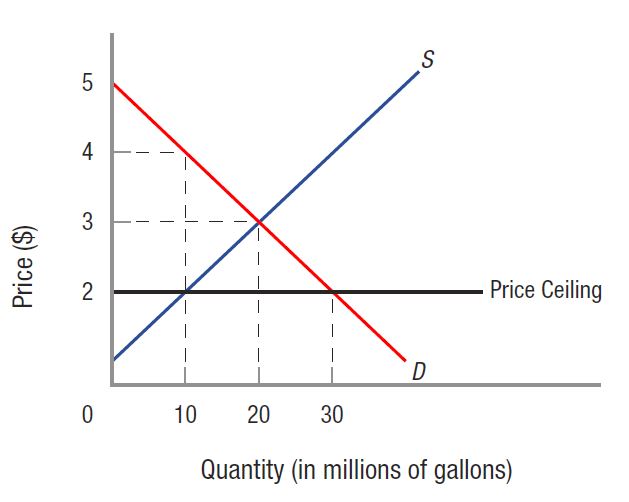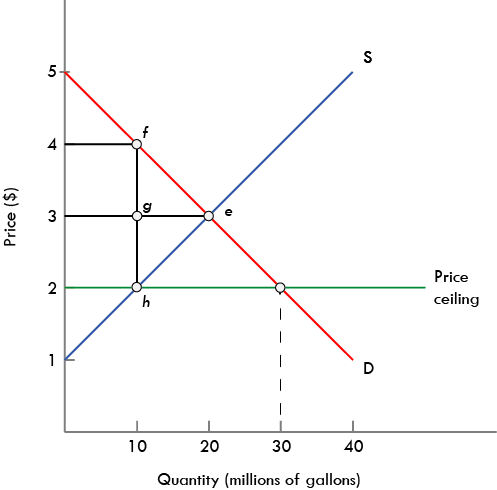Chapter 4
Screen 1 of 4
Suppose the U.S. government places a price ceiling on the sale of gasoline at $2 per gallon in the accompanying figure.

A. How much of a shortage or surplus of gasoline would result? There is a of million gallons.
- Chapters
- descriptions off, selected
- captions settings, opens captions settings dialog
- captions off, selected
- English Captions
This is a modal window.
Beginning of dialog window. Escape will cancel and close the window.
End of dialog window.
This is a modal window. This modal can be closed by pressing the Escape key or activating the close button.
This is a modal window.
Screen 2 of 4
B. Calculate the effects of this policy in terms of the changes in consumer surplus and producer surplus. Consumer surplus by $ million, while producer surplus by $ million.


- Chapters
- descriptions off, selected
- captions settings, opens captions settings dialog
- captions off, selected
- English Captions
This is a modal window.
Beginning of dialog window. Escape will cancel and close the window.
End of dialog window.
This is a modal window. This modal can be closed by pressing the Escape key or activating the close button.
This is a modal window.
Screen 3 of 4
Suppose the U.S. government places a price ceiling on the sale of gasoline at $2 per gallon in the accompanying figure.

C. How much deadweight loss is created? Deadweight loss is $ million.
- Chapters
- descriptions off, selected
- captions settings, opens captions settings dialog
- captions off, selected
- English Captions
This is a modal window.
Beginning of dialog window. Escape will cancel and close the window.
End of dialog window.
This is a modal window. This modal can be closed by pressing the Escape key or activating the close button.
This is a modal window.
Screen 4 of 4
Suppose the U.S. government places a price ceiling on the sale of gasoline at $2 per gallon in the accompanying figure.

D. What would happen if the price ceiling is raised to $5 per gallon?
| A. |
| B. |
| C. |
| D. |
- Chapters
- descriptions off, selected
- captions settings, opens captions settings dialog
- captions off, selected
- English Captions
This is a modal window.
Beginning of dialog window. Escape will cancel and close the window.
End of dialog window.
This is a modal window. This modal can be closed by pressing the Escape key or activating the close button.
This is a modal window.